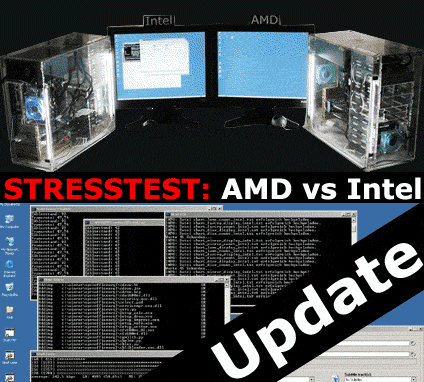Dual Core Stress Test: AMD vs. Intel
Logbook: What's Wrong With AMD?

Monday, June 13th 2005: Big surprise at the THG lab.
Over this past weekend, we took a closer look at the load sharing of both dual core systems. We were particularly interested in the fact that the AMD System is much slower at DIVx encoding than the Intel machine - this suggests that we need a more detailed breakdown of the results.
So we decided to offer you a new service. Our engineers developed a new piece of software that shows the "real time" load of each CPU and the distribution of the loads on all cores. Remember: We are running four applications in parallel on both systems. So there are two additional charts depicting all values side by side.
Our observations suggest that the AMD system can't distribute the CPU's computing power as well among the four single applications as the Intel system does. So the big question here is: Why?
What are the reasons for the AMD dual core CPU being apparently unable to ideally distribute the four applications on the two cores, even though the load on the single cores is at maximum? Is this an issue of the integrated memory controller and its memory allocation/controller logic? Or perhaps the integrated memory controller of the X2 produces more overhead, resulting in lower performance?
Perhaps we will have an answer to this question within the next 24 hours when we disable HT on the Intel system and do further analysis of our results.
On the plus side, since our last maintenance session, the Intel system has been stable and is running quite fast.
Stay on the Cutting Edge
Join the experts who read Tom's Hardware for the inside track on enthusiast PC tech news — and have for over 25 years. We'll send breaking news and in-depth reviews of CPUs, GPUs, AI, maker hardware and more straight to your inbox.
You also can see a change in the ranking of the live benchmarks; in MP3 encoding, the Intel machine is now in front of its rival, while the AMD system is faster compressing data/files (WinRAR). There are no changes on the DIVx encoding front; as mentioned before, the Intel machine is well ahead of AMD in this area.
Current page: Logbook: What's Wrong With AMD?
Prev Page Lessons Learned From The Dual-Core Stress Test - David Strom Next Page The THG Lab Logbook: AMD Almost 3 Days, Intel 2 Days OnlineMost Popular

